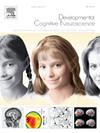Missing data approaches for longitudinal neuroimaging research: Examples from the Adolescent Brain and Cognitive Development (ABCD) Study®
IF 4.9
2区 医学
Q1 NEUROSCIENCES
引用次数: 0
Abstract
This paper addresses the challenges of managing missing values within expansive longitudinal neuroimaging datasets, using the specific example of data derived from the Adolescent Brain and Cognitive Development (ABCD) . The conventional listwise deletion method, while widely used, is not recommended due to the risk that substantial bias can potentially be introduced with this method. Unfortunately, recommended alternative practices can be challenging to implement with large datasets. In this paper, we advocate for the adoption of more sophisticated statistical methodologies, including multiple imputation, propensity score weighting, and full information maximum likelihood (FIML). Through practical examples and code using ABCD data, we illustrate some of the benefits and challenges of these methods, with a review of how these advanced methodologies bolster the robustness of analyses and contribute to the integrity of research findings in the field of developmental cognitive neuroscience.
纵向神经影像学研究的缺失数据方法:来自青少年大脑和认知发展(ABCD)研究的例子
本文利用来自青少年大脑和认知发展(ABCD)研究®的具体数据示例,解决了在广泛的纵向神经成像数据集中管理缺失值的挑战。传统的列表删除法虽然被广泛使用,但由于该方法有可能引入大量偏倚的风险,因此不推荐使用。不幸的是,对于大型数据集,推荐的替代实践可能具有挑战性。在本文中,我们提倡采用更复杂的统计方法,包括多重imputation,倾向得分加权和全信息最大似然(FIML)。通过使用ABCD Study®数据的实际示例和代码,我们说明了这些方法的一些好处和挑战,并回顾了这些先进的方法如何增强分析的稳健性,并有助于发展认知神经科学领域研究成果的完整性。
本文章由计算机程序翻译,如有差异,请以英文原文为准。
求助全文
约1分钟内获得全文
求助全文
来源期刊

Developmental Cognitive Neuroscience
NEUROSCIENCES-
CiteScore
7.60
自引率
10.60%
发文量
124
审稿时长
6-12 weeks
期刊介绍:
The journal publishes theoretical and research papers on cognitive brain development, from infancy through childhood and adolescence and into adulthood. It covers neurocognitive development and neurocognitive processing in both typical and atypical development, including social and affective aspects. Appropriate methodologies for the journal include, but are not limited to, functional neuroimaging (fMRI and MEG), electrophysiology (EEG and ERP), NIRS and transcranial magnetic stimulation, as well as other basic neuroscience approaches using cellular and animal models that directly address cognitive brain development, patient studies, case studies, post-mortem studies and pharmacological studies.
 求助内容:
求助内容: 应助结果提醒方式:
应助结果提醒方式:


